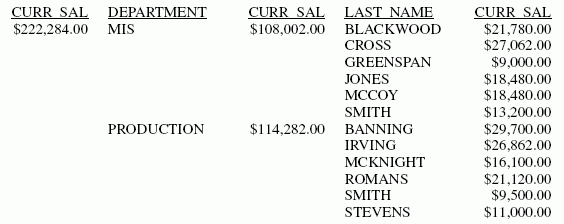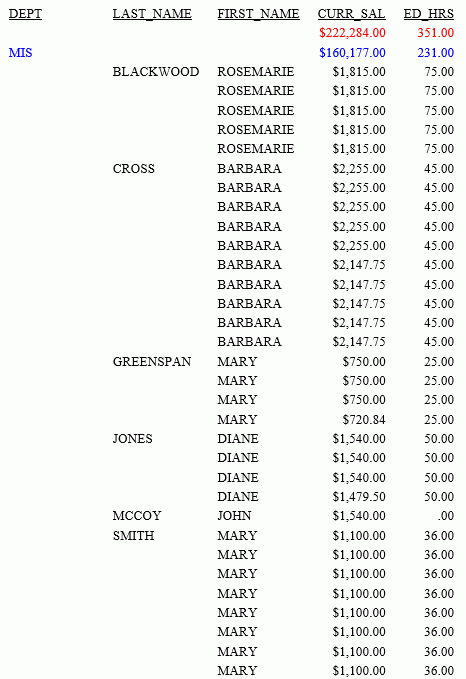|
In this section: |
A request can consist of up to 64 sets of separate display commands (also known as verb phrases), each with its own sort conditions. In order to display all of the information, a meaningful relationship has to exist among the separate sort condition sets. The following rules apply:
- Up to 64 display commands and their associated sort conditions can be used. The first display command does not have to have any sort condition. Only the last display command may be a detail command, such as PRINT or LIST. Other preceding display commands must be aggregating commands.
- WHERE and IF criteria apply to the records selected for the report as a whole. WHERE and IF criteria are explained in Selecting Records for Your Report.
- When a sort phrase
is used with a display command, the display commands following it
must use the same sorting condition in the same order. For example:
TABLE FILE EMPLOYEE SUM ED_HRS SUM CURR_SAL CNT.CURR_SAL BY DEPARTMENT PRINT FIRST_NAME BY DEPARTMENT BY LAST_NAME END
The first SUM does not have a sort condition. The second SUM has a sort condition: BY DEPARTMENT. Because of this sort condition, the PRINT command must have BY DEPARTMENT as the first sort condition, and other sort conditions may be added as needed.
Example: Using Multiple Display and Sort Fields
The following request summarizes several levels of detail in the data source.
TABLE FILE EMPLOYEE SUM CURR_SAL SUM CURR_SAL BY DEPARTMENT SUM CURR_SAL BY DEPARTMENT BY LAST_NAME END
The command SUM CURR_SAL calculates the total amount of current salaries; SUM CURR_SAL BY DEPARTMENT calculates the total amounts of current salaries in each department; SUM CURR_SAL BY DEPARTMENT BY LAST_NAME calculates the total amounts of current salaries for each employee name.
The output is:



